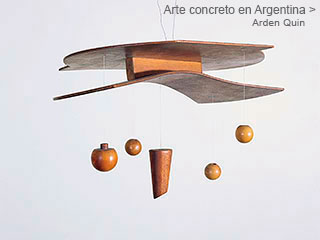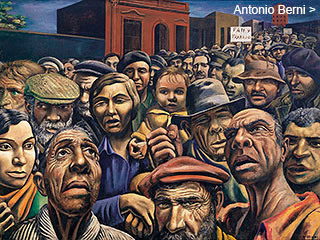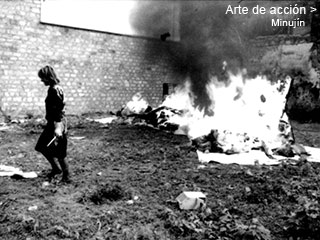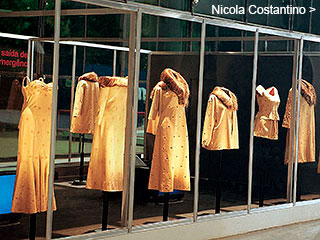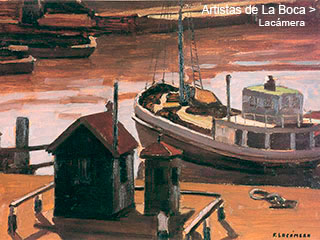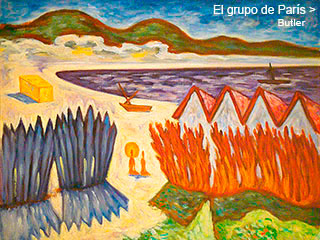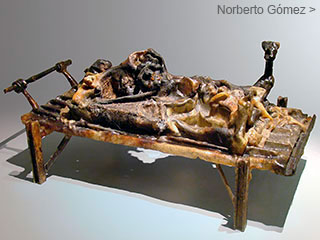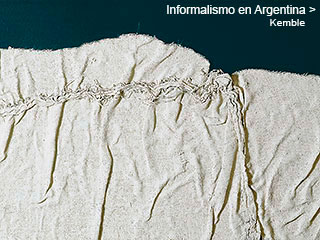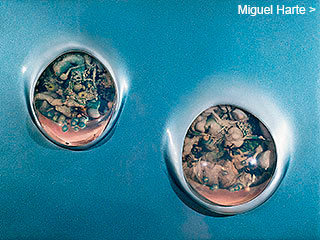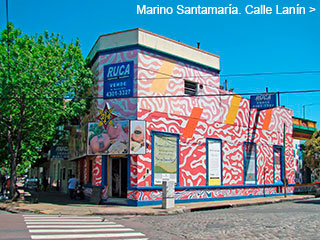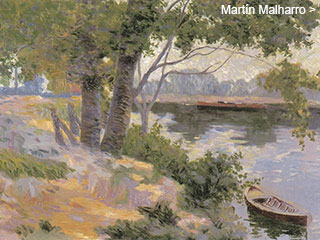Menú
Algunos dossiers
Concrete Art
in Argentina
in Argentina
by
Adriana Lauria
January 2003
January 2003
Abstraction asserted itself in Argentina through the achievements of groups such as Arte Concreto-Invención, Madí and Perceptismo, which developed their activity since the second half of the 1940s. These groups constituted the first organized national avant-garde and made their aesthetics known to the public through exhibitions, magazines, manifestoes, leaflets, lectures, etc.
Documents
Rhod Rothfuss
Rhod Rothfuss. “THE FRAME: A Problem of Current Plastics”, in Arturo magazine, Buenos Aires, 1944, no page number.
Prompted by the ‘79 bourgeois revolution in France, a strong naturalist trend invades the arts, especially painting, to which it will for long relegate to the condition of a photographic camera.
It will be necessary that a Cézanne emerge in the plastics scene, with such a pictorial concept that he would say, “I have found that the sun is something that cannot be reproduced, but that can be represented”; or a Gauguin, who wrote, “Primitive art stems from spirit and it widens nature. The so-called refined art stems from sensuality and serves nature. Nature is the server of the first one and the master of the second. By turning him into her server, making the artist adore her, nature vilifies him. That is how we have fallen into the abominable mistake of Naturalism that started with the Greeks in times of Pericles...”(1), so that, slowly, painting could return to its old rules, long forgotten.
This would take effect in 1907 (2) with the appearance of Cubism, through which the laws of proportion, of color, the composition and all regarding technique, would recover full significance in the creation of a painting.
Guillaume Apollinaire concisely defines Cubism in “Le Temps” issue of October 14, 1914, where he refers to the “Geometric aspect of those paintings, where the artists had wished to restore, with a great pureness, the essential reality”. And it is this wish to express the reality of things what will lead painting towards a more and more abstract plastics, passing through Futurism, and ending in the last stages of Cubism, Non-Objectivism, Neo-Plasticism and also, in its abstract mode, Constructivism.
At that moment, while artists seem to be farther than ever from nature, Vicente Huidobro will say “Man has never been closer to nature than now, when he no longer tries to imitate her in her appearances, but doing as she does, imitating her in the deep of her constructive laws, in the making of a whole within the mechanism of production of new forms.”
But while the problem of pure plastics creation was solved, the very solution (due to an unbreakable dialectic principle) created another problem, which is less perceptible in Neo-Plasticism and in Neo-Constructivism, because of their orthogonal composition, than in Cubism and in Non-Objectivism, and that was –the frame.
Cubism and Non-Objectivism, on account of their compositions based whether upon oblique lines rhythms, or upon triangular or polygonal figures, created for themselves the problem that a rectangular frame would cut the plastic development of any subject. The painting, inexorably, was reduced to a fragment.
This is soon perceived. And the pictures show the solutions sought. For instance, MAN RAY, LÉGER, BRAQUE, and close to ourselves, the autumnal cubist Pettoruti, among others, compose their works in circles, ellipses or polygons, which they inscribe in the frame’s quadrilateral.
Yet this is not a solution either. Because it is precisely the regularity of those figures, the interrupted, symmetrical contour what dominates the composition, cutting it off.
That is why most of those pictures continued within the window concept of naturalist pictures, giving us a part of their subjects but not the whole of them. A painting with a regular frame causes to forebode a continuity of the subject, which disappears only when the frame is rigorously structured in accordance to the painting’s composition. Namely, when the edge of the canvass is awarded an active role in the plastic creation. A role it must always have. A painting must be something that begins and finishes in itself. Without interruption.
1) Paul Gauguin: Notes Éparses.
2) Mentioned by Guillermo Jeanneau in ART CUBISTE.
2) Mentioned by Guillermo Jeanneau in ART CUBISTE.


